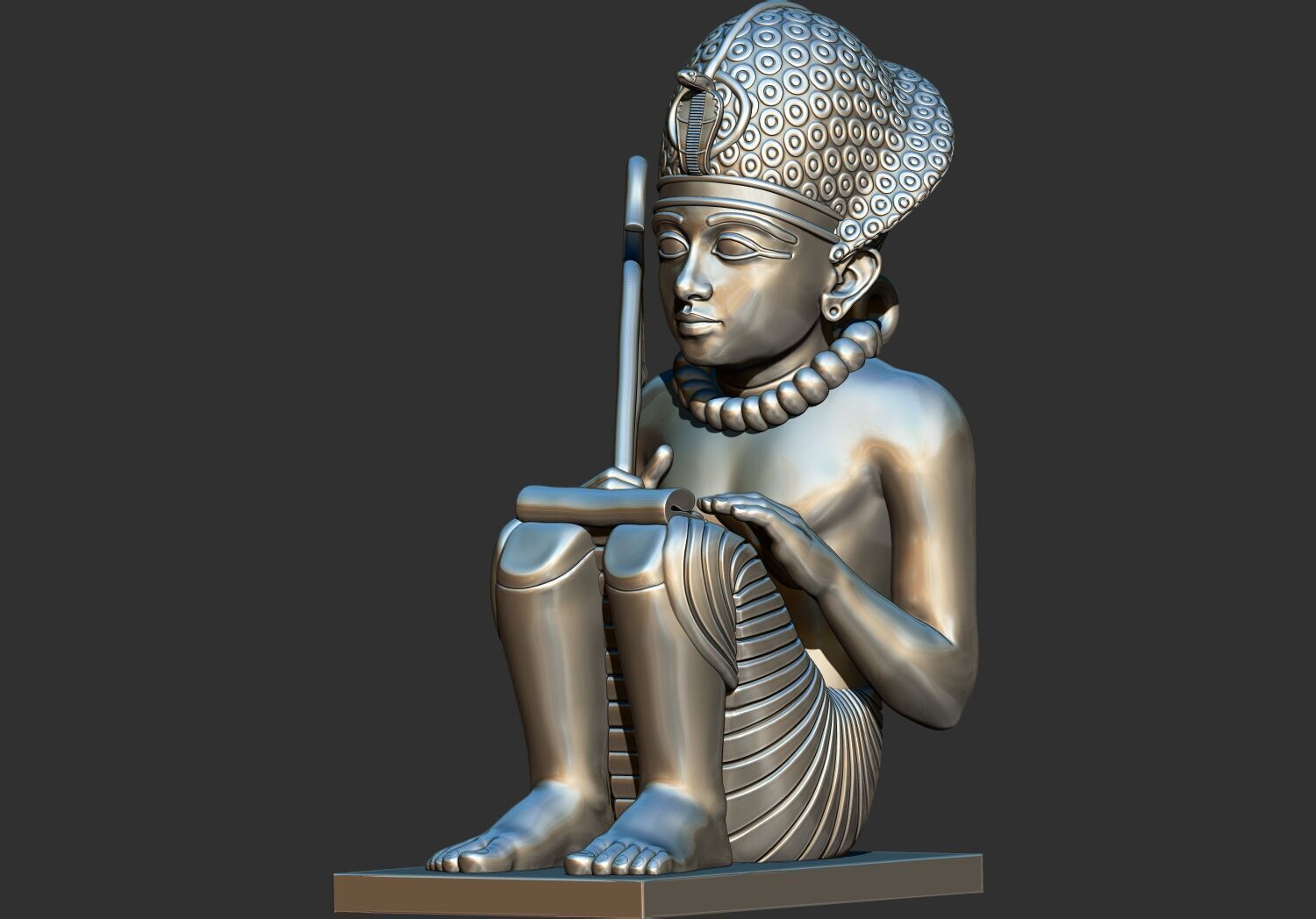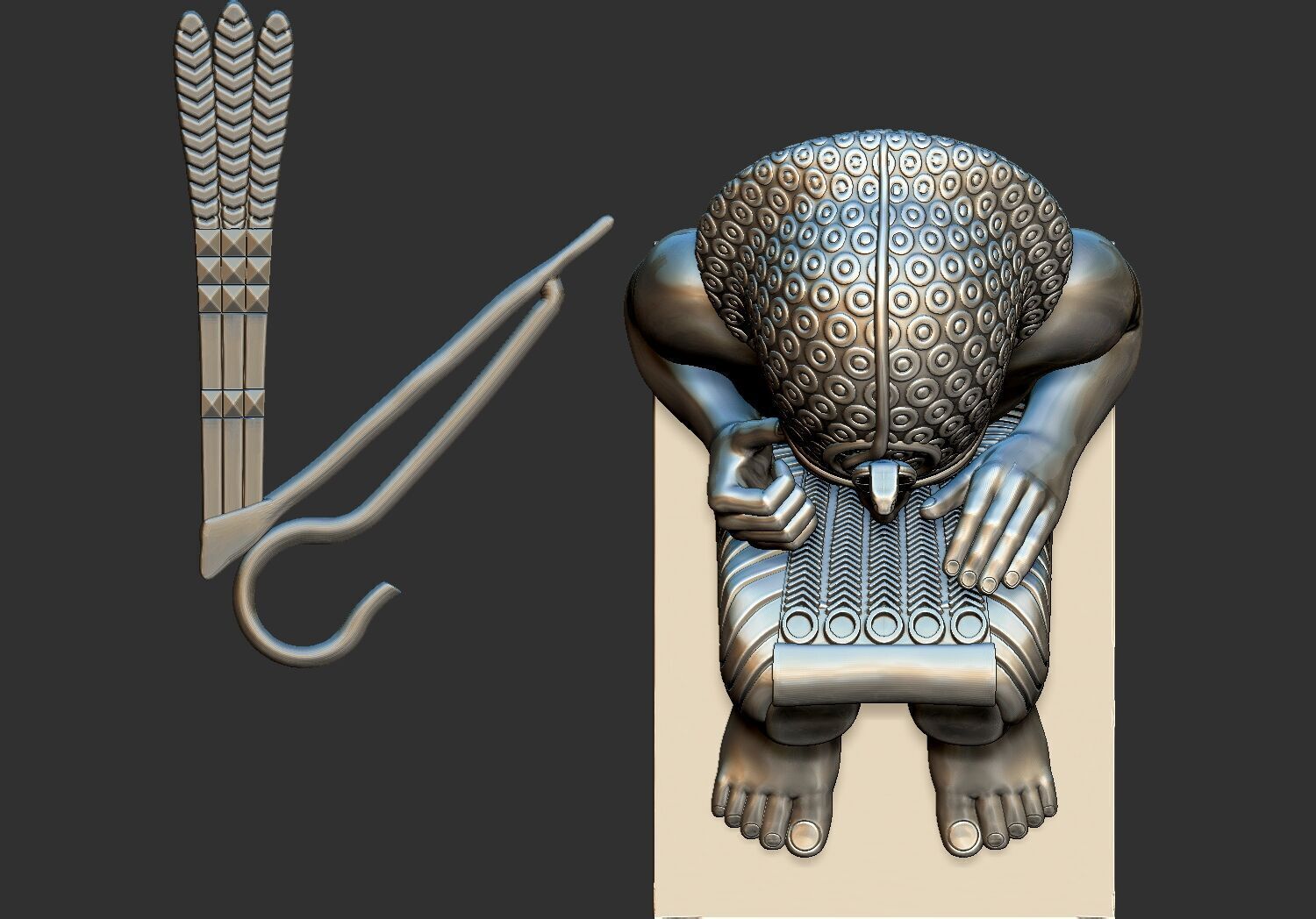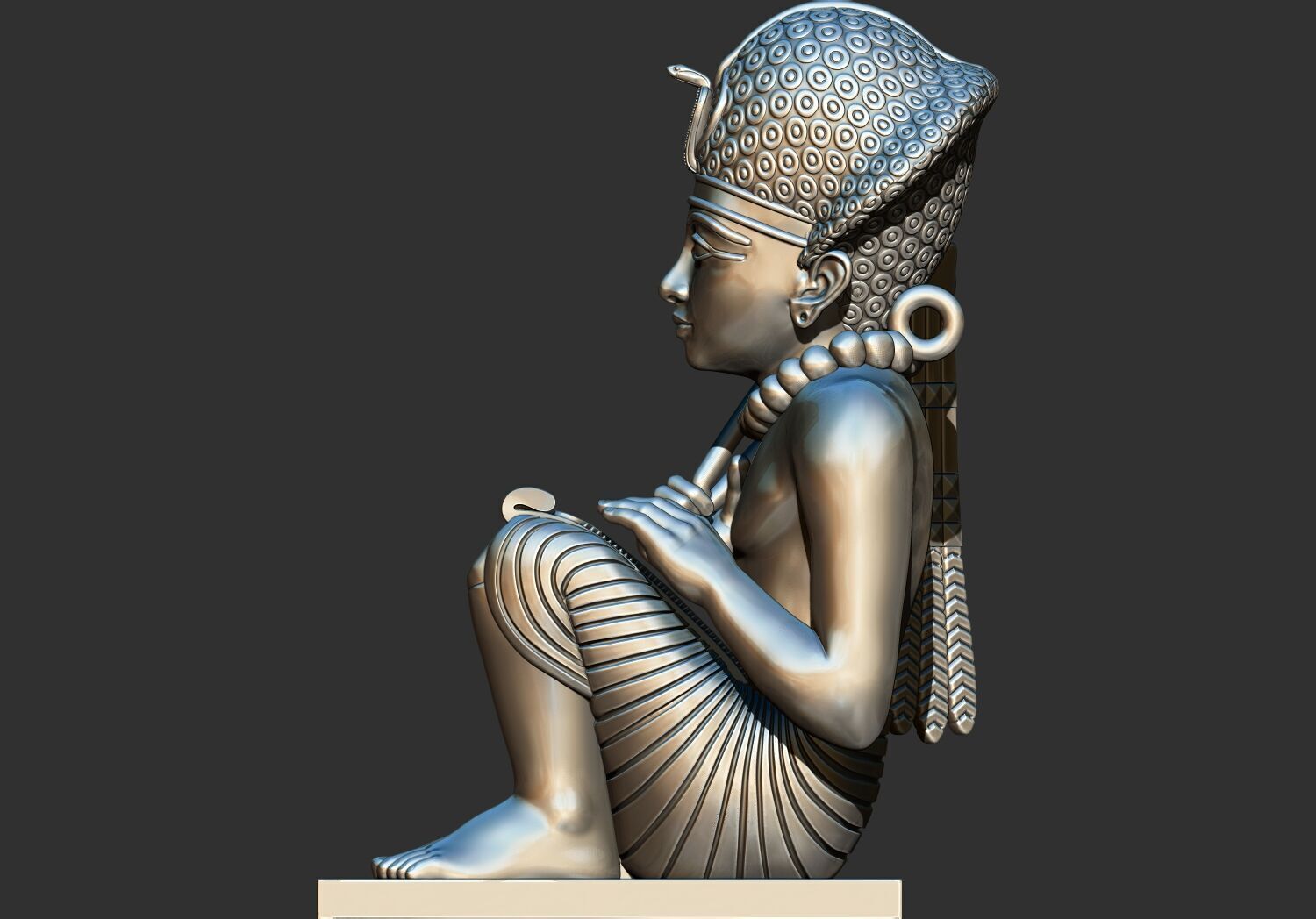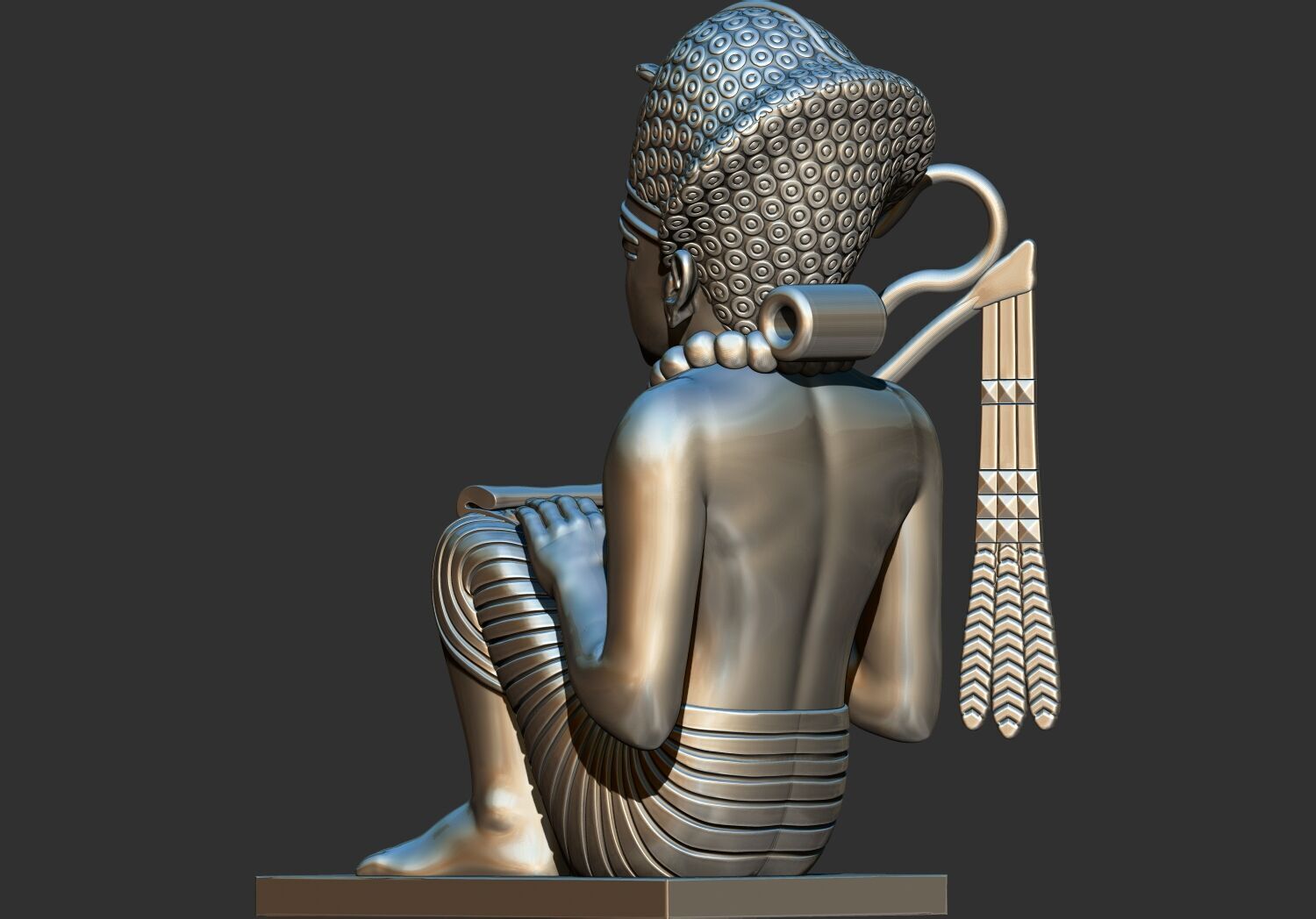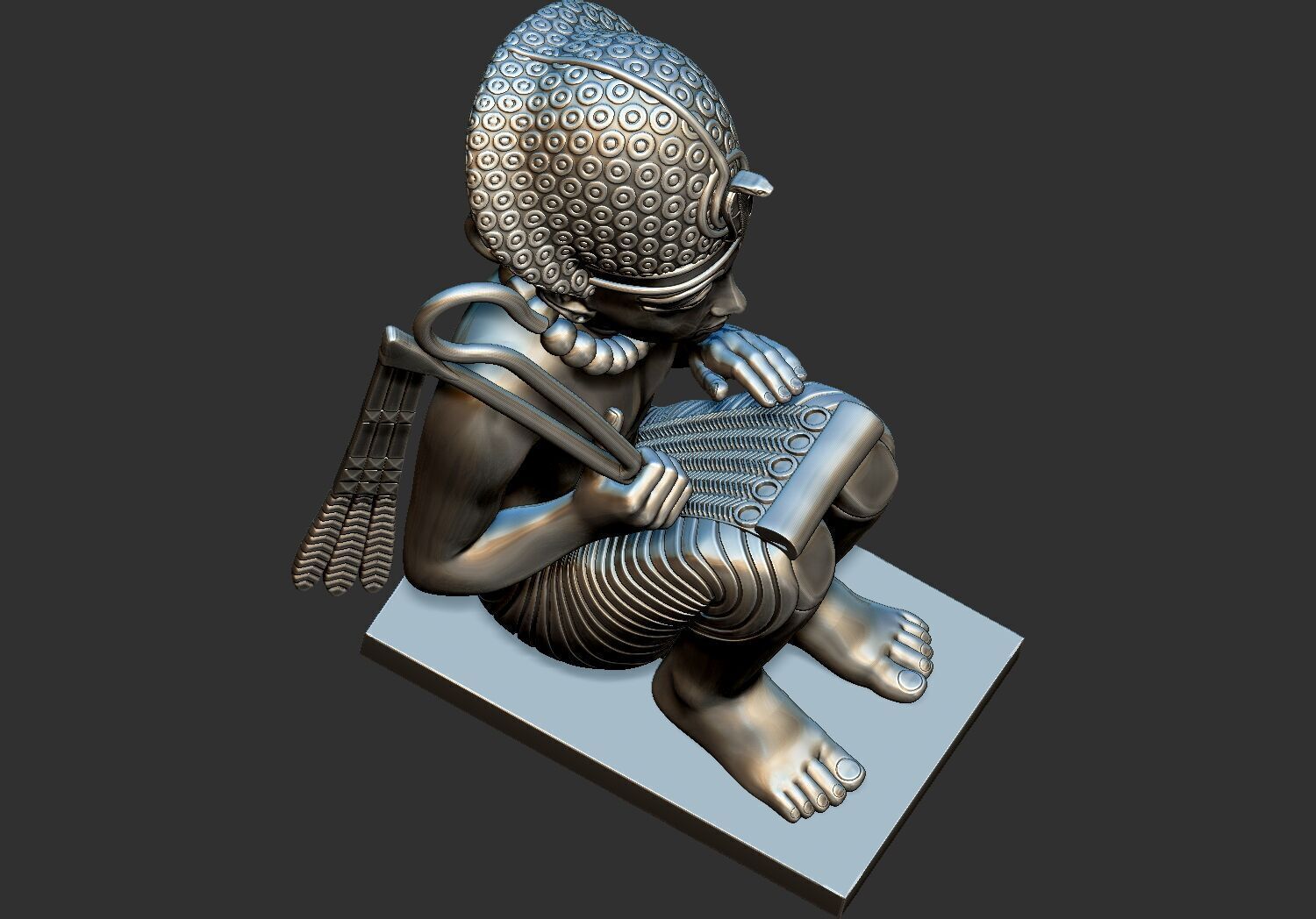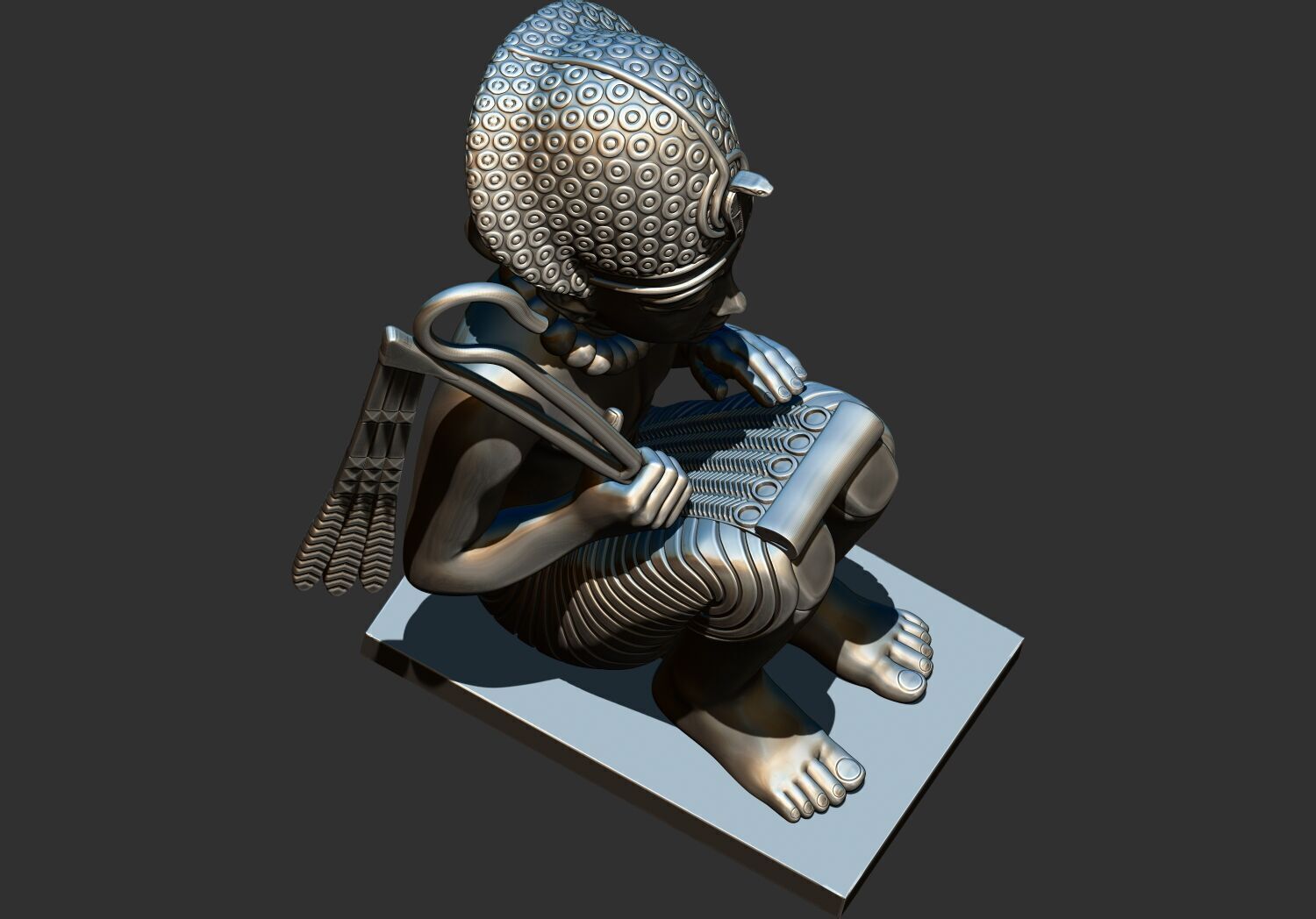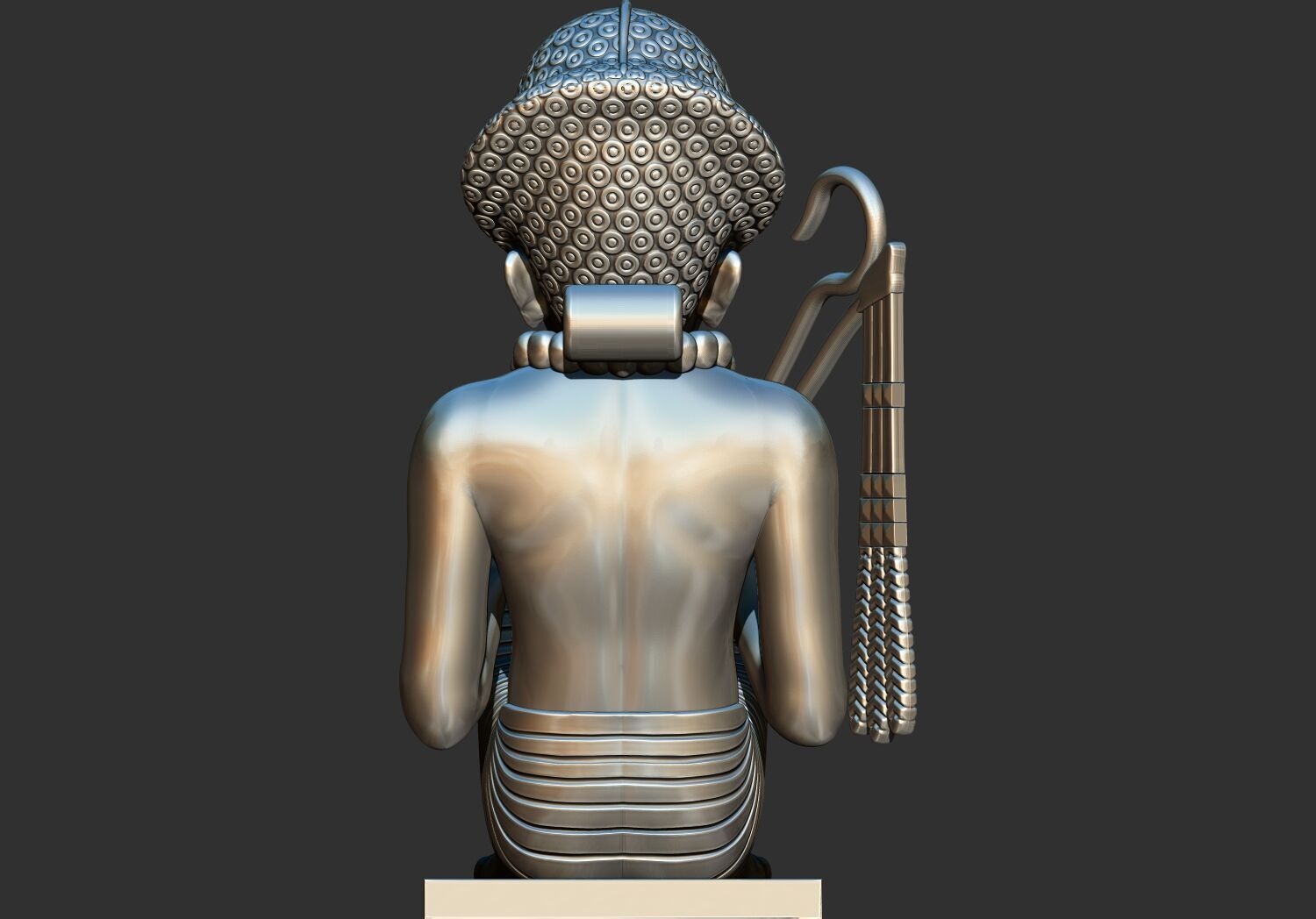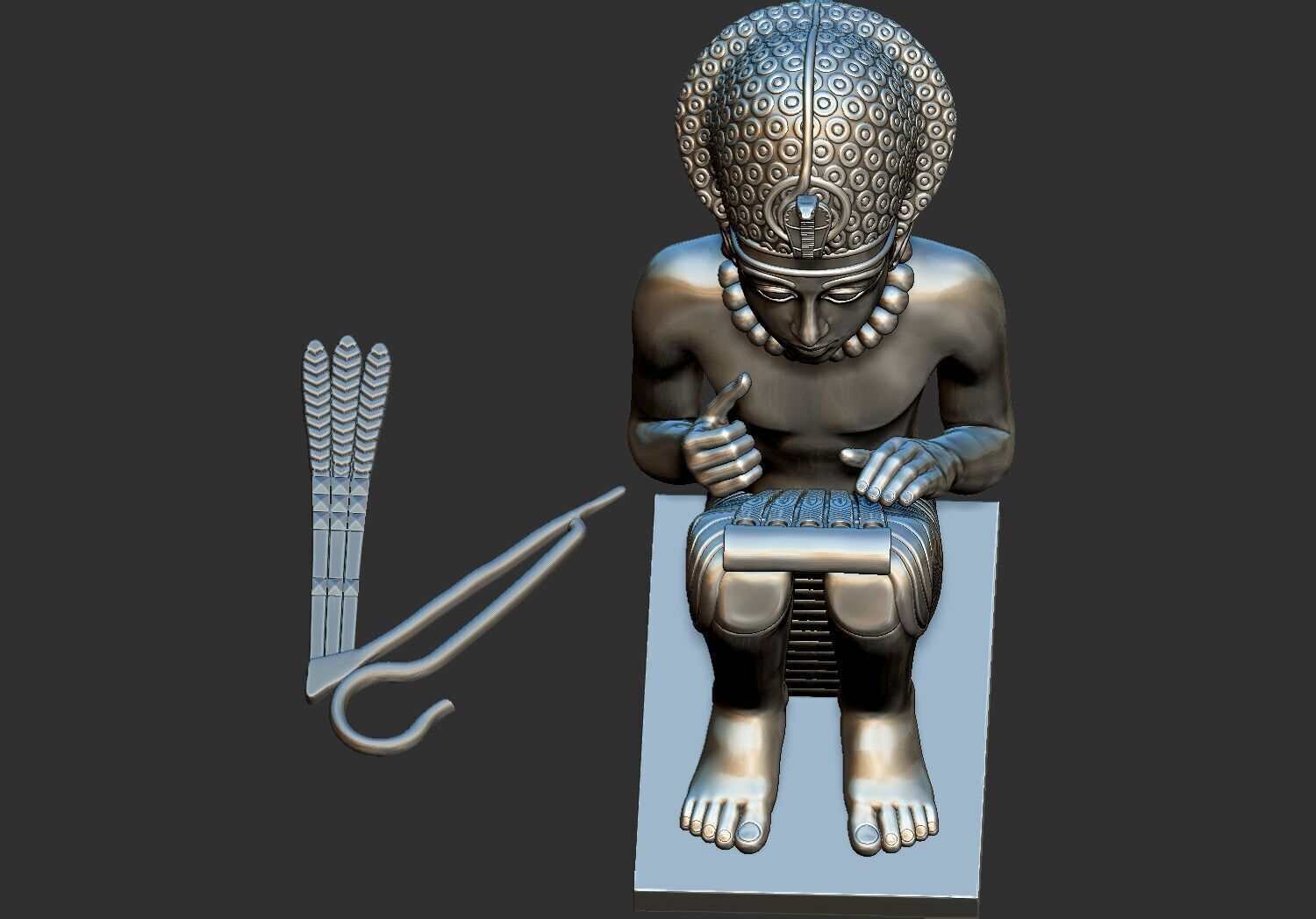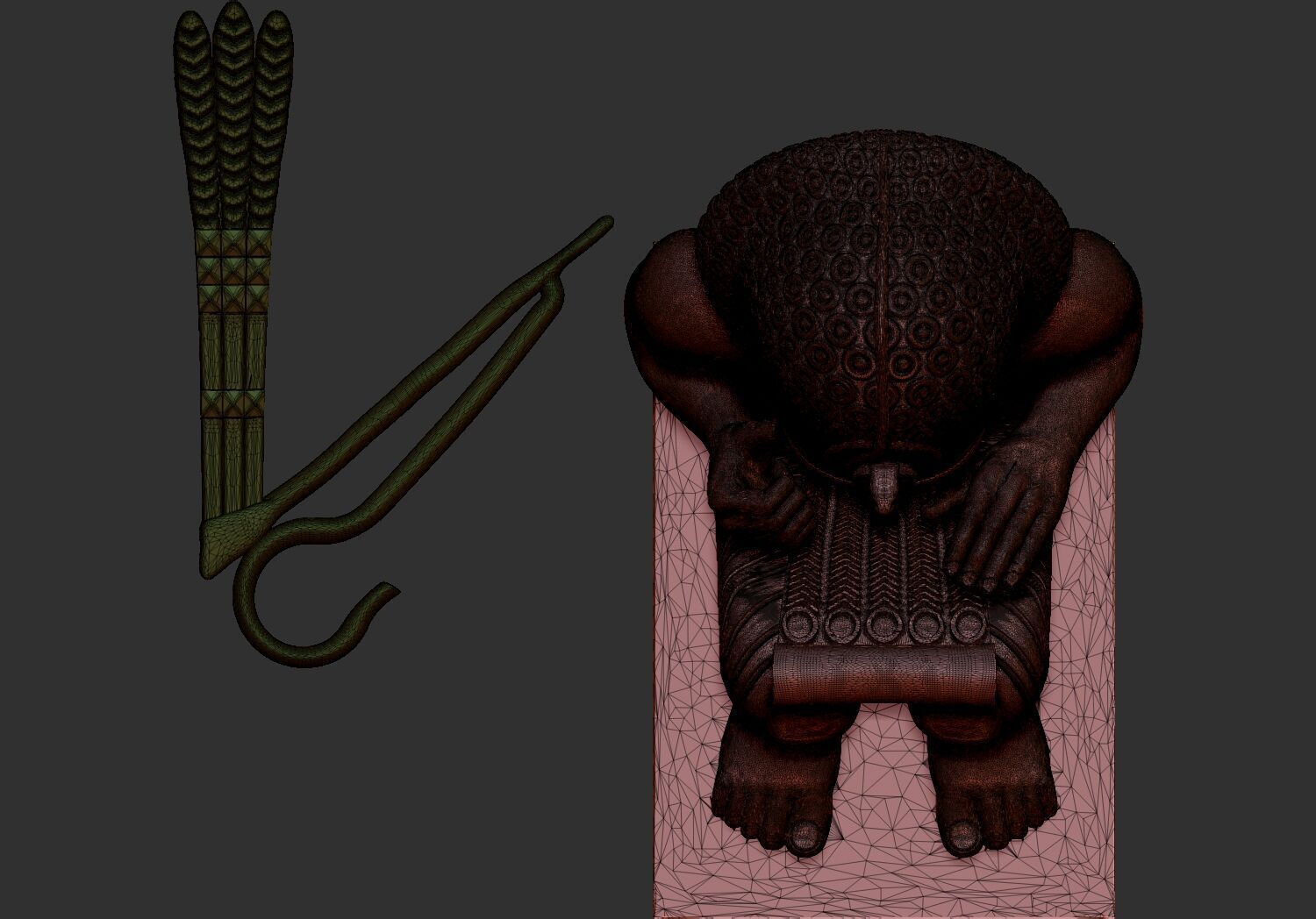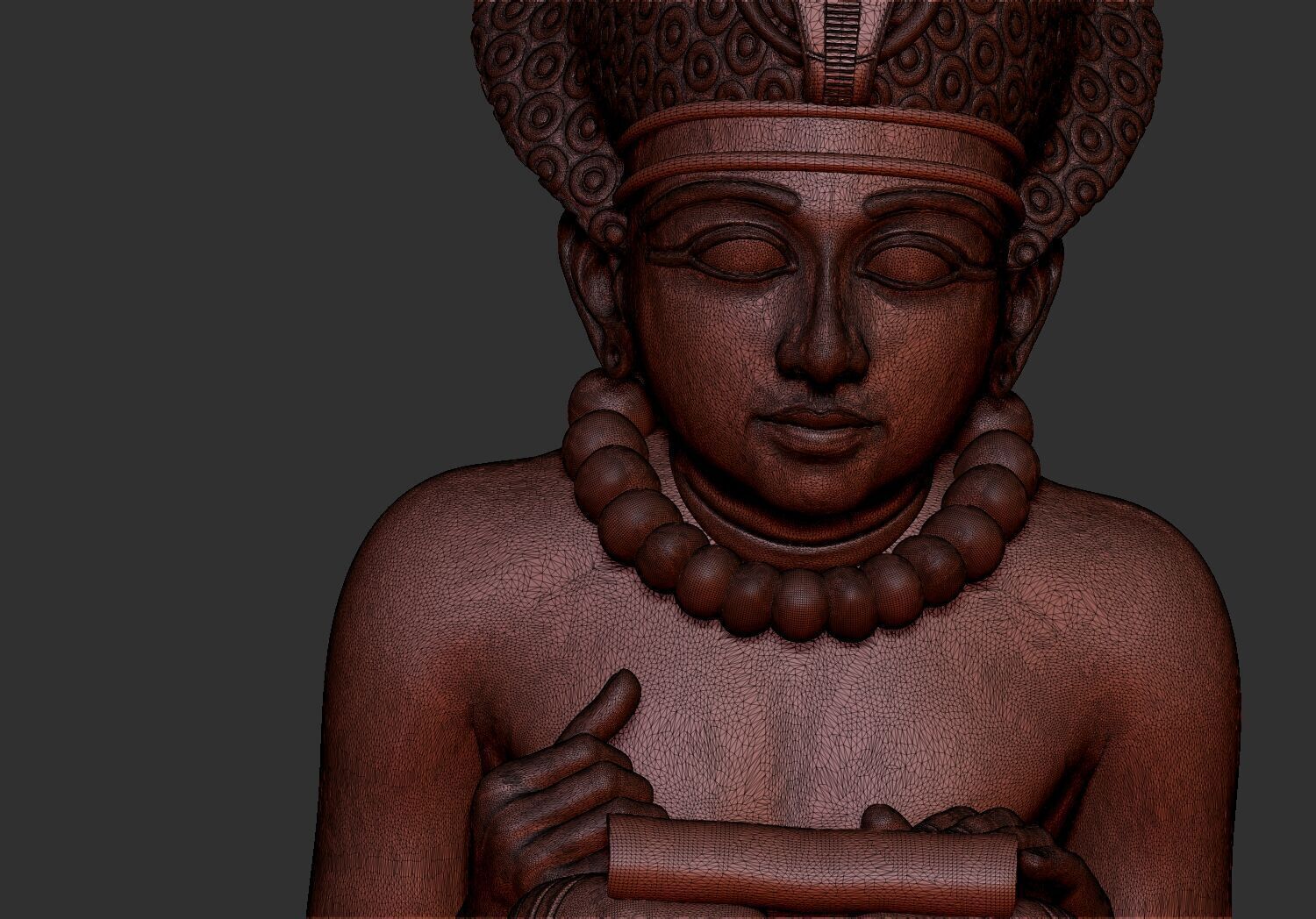
Tutankhamun Gold Pendant of Amenhotep III 3d printable model 3D print model
Tutankhamun Gold Pendant of Amenhotep III 3d printable model
The gold pendant belonging to Amenhotep III, discovered in Tutankhamun's tomb, is an extraordinary piece of jewelry that underscores the relationship between these two pharaohs. This pendant, often adorned with elaborate designs and symbols linked to royalty and divinity, exemplifies the exceptional craftsmanship characteristic of the 18th Dynasty.
It is thought that this pendant originally belonged to Amenhotep III and was subsequently placed in Tutankhamun’s tomb, potentially serving as a symbolic legacy or a tribute to the earlier pharaoh.
In this exquisite gold pendant, King Amenhotep III is depicted in a squatting posture, adorned with the Blue Khepresh Crown and holding the crook and flail. He is also shown wearing a genuine gold necklace embellished with glass beads. The statuette is suspended from a looped gold chain, designed to function as a pendant.
Amenhotep III was a formidable and affluent ruler of the 18th Dynasty. As the grandfather of King Tutankhamun, this golden statuette of Amenhotep III was unearthed in the Tomb of Tutankhamun (KV62) located in the Valley of the Kings, West Thebes.
It is noteworthy that Tutankhamun never had the opportunity to meet his grandparents. King Amenhotep III and Queen Tiye, the parents of the so-called 'renegade' king Akhenaten, passed away approximately five years prior to Tutankhamun's birth.
When he was laid to rest in his modest tomb in the Valley of the Kings, Tutankhamun was accompanied by a solid gold pendant depicting a squatting king, attached to a robust, woven gold chain.
The pendant of the squatting King Amenhotep III, found in Tutankhamun's tomb (KV62), showcases the king wearing the Khepresh, or Blue Crown, while holding a scepter and flail, symbols of an Egyptian monarch. His feet are bare, and around his neck is a string of small, colorful beads.
Remarkably, all of these intricate details are encapsulated in a statuette measuring just over 5.5 centimeters in height. Howard Carter believed this figure represented Amenhotep III and classified it as a treasured heirloom from his illustrious grandfather.


